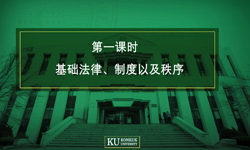성리학이 자리 잡기 이전, 곧 조선 이전에는 찾아보기 어렵던 지리산유람록이 성리학에 대한 이해가 깊어지는 것을 기다려 100여 편이나 등장했다. 그리고 성리학적 전통이 무너져 내리는 것...
http://chineseinput.net/에서 pinyin(병음)방식으로 중국어를 변환할 수 있습니다.
변환된 중국어를 복사하여 사용하시면 됩니다.
- 中文 을 입력하시려면 zhongwen을 입력하시고 space를누르시면됩니다.
- 北京 을 입력하시려면 beijing을 입력하시고 space를 누르시면 됩니다.

선비들이 유람을 떠난 까닭: 유학(儒學)과 유람(遊覽) = Reasons why the Classical Scholars of the Joseon Dynasty went Traveling - Confucianism and Traveling
한글로보기https://www.riss.kr/link?id=A100645702
- 저자
- 발행기관
- 학술지명
- 권호사항
-
발행연도
2015
-
작성언어
Korean
-
주제어
유람 ; 유람록 ; 지리산 ; 유학 ; 성리학 ; Traveling ; traveling journal ; Mt. Jiri ; Confucianism ; Neo-Confucianism
-
KDC
151.52
-
등재정보
KCI등재
-
자료형태
학술저널
-
수록면
137-162(26쪽)
- DOI식별코드
- 제공처
-
0
상세조회 -
0
다운로드
부가정보
국문 초록 (Abstract)
성리학이 자리 잡기 이전, 곧 조선 이전에는 찾아보기 어렵던 지리산유람록이 성리학에 대한 이해가 깊어지는 것을 기다려 100여 편이나 등장했다. 그리고 성리학적 전통이 무너져 내리는 것과 거의 동시에 유람록을 남기는 전통 또한 사라졌다. 우리는 바로 이 지점에 주목한다. 그리고 자연스레 하나의 물음을 떠올린다. 유람록의 주체이자 성리학을 이념적 토대로 삼았던 선비, 그들은 도대체 왜 지리산 유람 길을 떠났고 수많은 유람록을 남겼을까? 이 글은 이 물음에 대해 배움과 휴식 그리고 선현을 닮기 위한 노력이라는 세가지 측면에서 선비들이 유람을 떠난 동기를 찾아보고, 그것이 어떻게 넓게는 유학 그리고 좁게는 성리학과 연결되는지를 확인하고 있다. 선비들의 유람은 한편으로 일상의 배움을 이어서 세상을 읽어가는 또 다른 형태의 배움을 위한길이자, 또 다른 한편으로는 일상의 긴장을 해소하는 휴식의 길이었다. 그리고 긴장과 이완이라는 두 가지 과정을 통해 궁극적으로 선비들이 성취하고자 했던것은 다름 아닌 선현들과 닮은 모습, 곧 자신이 현인 혹은 그와 같은 인격으로 완성되는 것이었다. 선비들에게 긴장과 이완, 배움과 휴식이 둘이 아니었다면, 그것을 통해서 선현을 닮아가는 것 역시 또 다른 길이 될 수 없었던 것이다. 아울러 유람은 선비들에게 세상을 읽는 하나의 방식이었다. 세상 읽기는 세상속에서 살아가는 데 반드시 필요한 것이지만, 그것은 가끔 세상과 일정한 거리를 둘 수 있을 때 더욱 충실해지기 때문이다. 그리고 이점에서 성리학에 대한 이해가 깊어지는 것과 함께 유람록의 전통이 세워지고, 성리학적 전통이 무너지는 것과 거의 동시에 유람록의 전통 역시 사라지는 이유를 짐작하게 된다. 선비들의 시대가 끝나면서 이들이 세상을 읽던 방식 역시 함께 사라질 수밖에 없었던 것이다.
다국어 초록 (Multilingual Abstract)
Before Neo-Confucianism established itself, over 100 traveling journals of Mt. Jiri were written, waiting for deepening of the understanding of Neo-Confucianism. The traveling journals of Mt. Jiri were not seen before the Joseon Dynasty. As the tradit...
Before Neo-Confucianism established itself, over 100 traveling journals of Mt. Jiri were written, waiting for deepening of the understanding of Neo-Confucianism. The traveling journals of Mt. Jiri were not seen before the Joseon Dynasty. As the tradition of Neo-Confucianism collapsed, the tradition of writing a traveling journal disappeared as well. This fact drew our attention and naturally led us to a question. The classical scholars of the Joseon Dynasty were main agents of traveling journals and used Neo-Confucianism as their ideological base. Why did they travel to Mt.Jiri and write a number of traveling journals? This study finds a reason why the classical scholars of the Joseon Dynasty went traveling in three aspects; learning, resting and efforts to inherit ancient sages. In addition, this study examines how their traveling affected Confucianism in a broad way and Neo-Confucianism in a narrow way. In one way, traveling of the classical scholars of the Joseon Dynasty was a different way to learn how to read the world in connection with what they learned from their daily life. In the other way, traveling was a resting way for them to relax their tension from their everyday life. What the classical scholars ultimately tried to achieve from two processes of tension and relaxation was the inheritance of their ancient sages. In other words, the classical scholars wanted to complete themselves by becoming a wise man or having characteristics of sages. Without tension and relaxation, learning and resting, the classical scholars would not have learned how to follow their ancient sages. Moreover, traveling was a way to read the world for the classical scholars. Although reading the world is necessary to live the world, we could be devoted to our lives more when we sometimes have a distance from the world. In this respect, we could assume how understanding of Neo-Confucianism deepened, how the tradition of traveling journals was built and why the tradition disappeared almost at the same time as the tradition of Neo-Confucianism collapsed. As the period for the classical scholars ended, the way they read the world could not help but disappeared with it.
동일학술지(권/호) 다른 논문
-
- 경상대학교 남명학연구소
- 허경진 ( Kyoung Jin Hur )
- 2015
- KCI등재
-
일제시기 경남지역의 공교운동(孔敎運動) 연구 - 도통사 공교지회(孔敎支會)와 배산서당 조선공교회(朝鮮孔敎會)를 중심으로 -
- 경상대학교 남명학연구소
- 이정희 ( Jeong Hee Lee )
- 2015
- KCI등재
-
- 경상대학교 남명학연구소
- 이종수 ( Jong Su Lee )
- 2015
- KCI등재
-
조선시대 관인(官人)들의 탈속인식과 지리산 유람벽(遊覽癖)
- 경상대학교 남명학연구소
- 이상균 ( Sang Kyun Lee )
- 2015
- KCI등재





 KCI
KCI KISS
KISS






